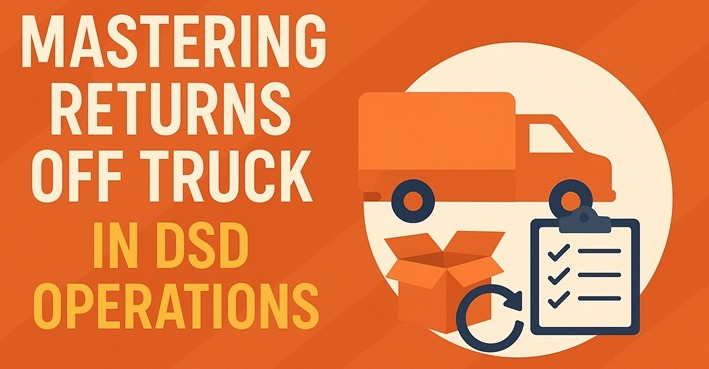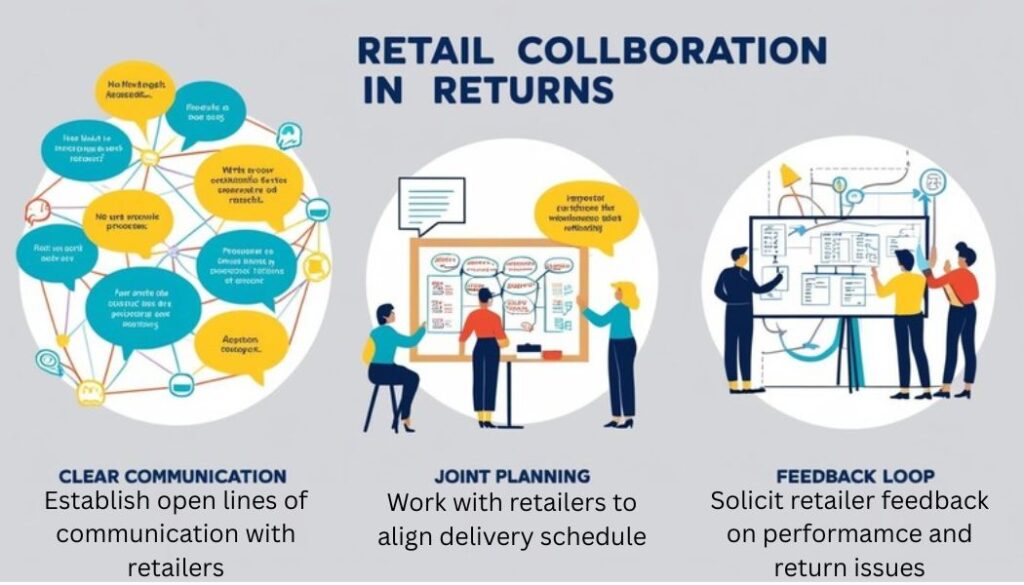
Best Practices for Returns Off Truck in DSD Operations
In previous articles we have addressed how to manage product returns in a DSD operation. But one issue we would like to expand upon are Returns Off Truck (ROT). ROT refers to the process of accepting returned products at the time of delivery, typically due to reasons such as overstock, damages, expired goods, or retailer agreements on unsold items. If not properly handled, ROT can disrupt inventory accuracy, revenue recognition, and customer satisfaction. This article explores how to manage returns off truck effectively to protect margins and maintain operational integrity.
Understanding Returns Off Truck
Returns off truck occur when a retailer refuses to accept products during a DSD delivery. Common reasons include:
- Damaged or defective products: Items that are crushed, leaking, or otherwise unsellable.
- Expired or near-expiry products: Goods that are past or nearing their sell-by date.
- Overstock: Retailers may reject excess inventory if they lack storage space or demand.
- Order errors: Incorrect items or quantities delivered compared to the retailer’s order.
- Promotional or seasonal items: Products tied to specific campaigns that are no longer relevant.
- Policy restrictions: Retailer policies may limit the acceptance of certain products.
These returns must be handled efficiently to avoid logistical bottlenecks, financial losses, and strained relationships with retail partners.
Benefits of Effective Return Management
Implementing these best practices yields several benefits for DSD operations:
Cost Reduction: Minimizing returns and optimizing their handling reduces product waste, transportation costs, and labor expenses.
Improved Retailer Relationships: Efficient return processes demonstrate reliability and professionalism, fostering trust with retail partners.
Enhanced Operational Efficiency: Streamlined processes free up driver time and truck space, allowing for more deliveries per route.
Sustainability: Reducing waste and exploring donation or recycling options aligns with environmental goals.
Data-Driven Insights: Analyzing return data helps identify inefficiencies in ordering, quality control, or logistics, driving continuous improvement.
Best Practices for Managing Returns Off Truck
1. Pre-Delivery Preparation
Proper planning before delivery can significantly reduce returns:
Accurate Order Verification: Ensure that orders are cross-checked against retailer purchase orders before loading the truck. Use automated systems or handheld devices to confirm quantities, SKUs, and product specifications.
Quality Control Checks: Inspect products for damage, expiration dates, and packaging integrity during loading. Remove any non-compliant items before they reach the retailer.
Inventory Forecasting: Collaborate with retailers to align delivery quantities with their sales data and storage capacity. Leverage historical sales data and predictive analytics to avoid overstocking.
Driver Training: Train drivers to understand retailer-specific policies, such as acceptance criteria for seasonal items or promotional products. Equip them with clear guidelines on handling returns.
2. Streamlined Delivery Process
An efficient delivery process minimizes the likelihood of returns and simplifies their management:
Real-Time Communication: Equip drivers with mobile devices or apps to communicate with dispatchers and retailers in real time. This allows quick resolution of discrepancies, such as order errors, before they result in returns.
On-Site Verification: Drivers should verify the order with store personnel upon arrival, checking for correct quantities, SKUs, and product conditions. This reduces the chance of immediate returns due to errors.
Organized Truck Layout: Arrange products on the truck to facilitate easy access and inspection. Group items by retailer, product type, or expiration date to streamline unloading and reduce handling errors.
3. Efficient Return Handling
When returns are unavoidable, handle them systematically to minimize disruption:
Immediate Documentation: Drivers should document returns on-site using digital tools or paper logs. Record the reason for the return, product details (SKU, quantity, batch number), and retailer feedback. This ensures accurate tracking and accountability.
Segregation on the Truck: Designate a specific area on the truck for returned items to avoid mixing them with outgoing inventory. Use labeled bins or partitions to organize returns by type (e.g., damaged, expired, overstock).
Return Categorization: Classify returns based on their condition and potential for reuse:
- Resellable: Undamaged products within acceptable sell-by dates can be redirected to other stores or returned to inventory.
- Damaged/Expired: These items may need to be disposed of or returned to the supplier for credit, depending on agreements.
- Promotional/Seasonal: Coordinate with the supplier or marketing team to determine if these can be repurposed or donated.
4. Post-Delivery Processing
Effective post-delivery processes ensure returns are handled cost-effectively:
Centralized Return Processing: Route returned items to a designated facility or hub for inspection, sorting, and disposition. This centralizes decision-making and reduces the burden on drivers.
Supplier Coordination: Work closely with suppliers to process returns for credit or replacement. Provide detailed documentation to support claims and expedite processing.
Data Analysis: Analyze return data to identify patterns, such as frequent returns of specific products, retailers, or drivers. Use this insight to address root causes, such as quality issues or forecasting errors.
Disposition Options: Explore alternatives to disposal, like donating usable products to food banks, redirecting to discount retailers, or recycling packaging materials.
5. Technology Integration
Leveraging technology can enhance the efficiency and transparency of return management:
Route Optimization Software: Use software to plan delivery routes that account for potential returns, ensuring drivers have enough time and space to manage them.
Inventory Management Systems: Integrate returns data into inventory systems to track stock levels and prevent over-ordering.
Electronic Proof of Delivery (ePOD): Implement ePOD systems to capture retailer signatures, photos of damaged goods, and return reasons in real time.
IoT Sensors: For perishable goods, use IoT sensors to monitor temperature and humidity during transport, reducing returns due to spoilage.
6. Retailer Collaboration
Strong partnerships with retailers are key to reducing and managing returns:

Conclusion
Managing Returns Off Truck in a DSD operation requires a strategic blend of technology, training, policies, and logistics. Done right, it can reduce shrinkage, improve customer relationships, and enhance inventory accuracy. As DSD continues to evolve with smarter route management and mobile technology, like Laceup solutions, returns should be viewed not as a disruption, but as an opportunity to improve service and streamline operations. If you want to learn more about our solutions, contact us.
I hope this article on WMS for production Inventoryhas been helpful to you. I will continue to post information related to management, distribution practices and trends, and the economy in general. Our channel has a lot of relevant information. Check out this video on return off truck.


Sorry, the comment form is closed at this time.